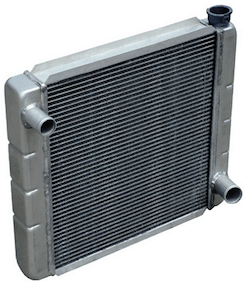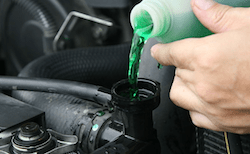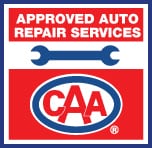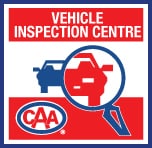Radiator Maintenance & Replacement
South Edmonton – Best Choice Automative
With engineers designing today’s cars smaller and more streamlined to decrease aerodynamic resistance to increase fuel economy, the radiator has evolved. The big copper radiators that were easily repaired or replaced are history. They have been replaced with a smaller lighter multi-material radiator. They consist of an aluminum core with plastic side bodies crimped on, and sealed with a rubber gasket. In some applications the radiator and air conditioning condenser are a pre-assembled part. To remove a radiator in a late model car was a simple procedure. In a modern car the procedure can involve discharging the air conditioning system, possibly involving removing the front bumper and grill.
780-466-8244
AMA Approved Auto Repair Facility
South Edmonton Radiator Services – 9 automotive service bays
 The late model copper rad was a repairable unit and very durable. The modern aluminum version is of a thinner, lighter material, which is susceptible to puncturing and developing leaks. Due to smaller radiators, the coolant passages within the unit are smaller; this in turn requires more attention to maintenance. Cooling system flushes and regularly scheduled fluid replacement will ensure that the smaller system will keep your engine cool when required and provide heat when needed in colder temperatures.
The late model copper rad was a repairable unit and very durable. The modern aluminum version is of a thinner, lighter material, which is susceptible to puncturing and developing leaks. Due to smaller radiators, the coolant passages within the unit are smaller; this in turn requires more attention to maintenance. Cooling system flushes and regularly scheduled fluid replacement will ensure that the smaller system will keep your engine cool when required and provide heat when needed in colder temperatures.
Involved in this enclosed cooling system is a heater core. The heater core is attached to the engine via hoses. Within the cooling system is a thermostat which is designed and engineered to open and close to a designed temperature range. This allows the engine to operate efficiently and provide maximum fuel economy and comfort for the driver and passengers. The heater core has some of the smallest passages in the cooling system, clean fluid is vital for it to provide the maximum heat required in colder temperatures.
The modern radiator, due to its construction, is very susceptible to sweating, seepage and leakage from the crimp joints of its assembled body. This is caused by the difference in the expansion and contraction rate of the aluminum body and the plastic side tanks. The most obvious sign of leakage would be a drip, or fluid on the ground, the next visible sign may be a fuzzy discolouration around parts of the coolant system. The radiator may have some leaks around the gasket sealing surfaces; and there may be leaks around the hose clamps and water connections. A leaking radiator in the modern car, in most cases, will need to be replaced, not repaired, due to the cost of labor to remove and reinstall it.

780-466-8244
AMA Approved Auto Repair Facility
South Edmonton Radiator Services – 9 automotive service bays
Radiator Repairs and Service
With engineers designing today’s cars smaller, and more streamlined to decrease aerodynamic resistance to increase fuel economy, the radiator has evolved. The big copper radiators that were easily repaired or replaced are history. They have been replaced with a smaller lighter multi material radiator. They consist of an aluminum core with plastic side bodies crimped on and sealed with a rubber gasket. In some applications the radiator and air conditioning condenser are a pre-assembled part. To remove a radiator in a late model car was a simple procedure, but in a modern car the procedure can involve discharging the air conditioning system, possibly involving removing the front bumper and grill.
The late model copper radiator was a repairable unit and very durable. The modern aluminum version is of a thinner, lighter material which is susceptible to puncturing and developing leaks. Due to smaller radiators the coolant passages within the unit are smaller; this in turn requires more attention to maintenance. Cooling system flushes and regularly scheduled fluid replacement will ensure that the smaller system will keep your engine cool when required and provide heat when needed in colder temperatures.
Involved in this enclosed cooling system is a heater core that is attached to the engine via hoses. Within the cooling system is a thermostat which is designed and engineered to open and close to a designed temperature range. This allows the engine to operate efficiently, and provide maximum fuel economy and comfort for the driver and passengers. The heater core has some of the smallest passages in the cooling system, clean fluid is vital for it to provide the maximum heat required in colder temperatures.
The modern radiator, due to its construction, is very susceptible to sweating, seepage and leakage from the crimp joints of its assembled body. This is caused by the difference in the expansion and contraction rate of the aluminum body and the plastic side tanks. The most obvious sign of leakage would be a drip or fluid on the ground, and fuzzy discolouration around parts of the coolant system. The radiator may have some discolouration around the gasket sealing surfaces, and there may be some around the hose clamps and water connections.
A leaking radiator in the modern car, in most cases, will be replaced and not repaired due to cost of labor to remove and reinstalling unit.
780-466-8244
AMA Approved Auto Repair Facility
South Edmonton Radiator Services – 9 automotive service bays
BACK to: Engines & Diagnostics








